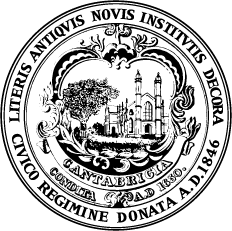The City is pleased to release the 2020 Canopy Assessment completed by the University of Vermont, which shows that the implementation of the Urban Forestry Master Plan is improving our tree canopy. Building canopy is a slow and steady race, but we are seeing substantive progress. The investments in tree plantings and maintenance combined with tree preservation initiatives are reversing the loss of tree canopy. In 2022 the City planted 1,385 trees (837 street trees and 550 open space trees). The City is committed to building on this work and continuing to implement the recommendations of the Plan.
Since being completed in 2020, the Urban Forestry Master Plan has led the efforts of the Urban Forestry Division and staff across the City. The Plan includes a 9-Step Action Plan with key strategies for increasing our canopy by curbing the loss of existing trees and growing canopy. The strategies ranging from implementing a soil management plan to increasing the number of trees planted annually to implementing the Tree Protection Ordinance to making more space for trees.
From 2014 to 2020 the percent of the city covered by canopy increased from 23% to 25.5% (net gain of 2.5% and 101 acres). Tree canopy gains from 2014 to 2020 helped offset steep losses during the 2009-2014 time period. Increasing canopy across the City is done through a combination of growing canopy and curbing the loss of existing trees. Preserving existing tree canopy is the most effective means for securing future tree canopy, as loss is an event, but gain is a process. The greatest rate of canopy loss in the City is happening on residential properties, so actions that curb the loss of trees on private property are critical. In 2019 and 2021, the City Council updated the Tree Protection Ordinance to cover the removal of Significant Trees, defined as 6 inches in diameter, and Exceptional Trees, defined as 30” in diameter, on private property. Permits are required to remove a Significant Tree or Exceptional Tree on private property and mitigation is required to help offset canopy loss. The mitigation can be replanting, payment into the Tree Fund or a combination of both. This allows residents to offset the cost associated with removing a significant tree by planting replacement trees. The goal is to curb removals and when removals do proceed, to encourage replanting of trees.
Following a steep drop of -3.6% (148 acres) in tree canopy coverage between 2009 and 2014, the 2018 and 2020 time periods both saw net gains. Public land was the only land use category that showed a net gain from over the entire study period, with a low of 33.8% tree canopy in 2014 to a high of 37.5% in 2020. 2020 public land tree canopy surpassed 2009 levels by about 7 acres. Residential areas saw the largest net loss of tree canopy over the entire time period. From 2009 to 2020, residential lands lost about 33 acres, a net loss of 2.22% tree canopy.

All of Cambridge's neighborhoods saw net gains in tree canopy between 2018 and 2020. North Cambridge had the largest gains, both in terms of area (12 acres) and in terms of relative percent change (9.4%). Mid-Cambridge still saw increases in tree canopy but saw the smallest gains with a 0.69 increase.

The City has invested in the Urban Forestry Division to support the work of implementing the plan. This has allowed the City to significantly increase the number of trees planted annually, with an eye to the 2025 goal of planting 1,250 trees (1,000 street trees and 250 open space trees). The expanded capacity has also supported modifying operations to improve the planting and growing conditions for newly planted trees – created a bare root nursery to support over 600 trees, added 5 new positions associated with the urban forest including a new planting crew, expanded watering capacity by hiring 6 to 10 Water by Bike interns, spread 15,000 gallons of compost tea on newly planted trees in 2022, expanded the standard size of tree pits, and with PB7 funding planted the City’s second Miyawaki Forest in the Green-Rose Park in the Port, worked with Green Cambridge to expand opportunities for planting trees on private property at no-cost to residents. These are just a few examples of the work that is being driven by the Urban Forestry Master Plan to increase the canopy coverage in the city.
The City is committed to continuing building on the efforts to increase canopy and implementing the Action Plan of the Urban Forest Master Plan. In 2025, the City will update the Healthy Forest – Healthy City Report and evaluate progress towards neighborhood canopy goals for both privately owned trees and City trees.



